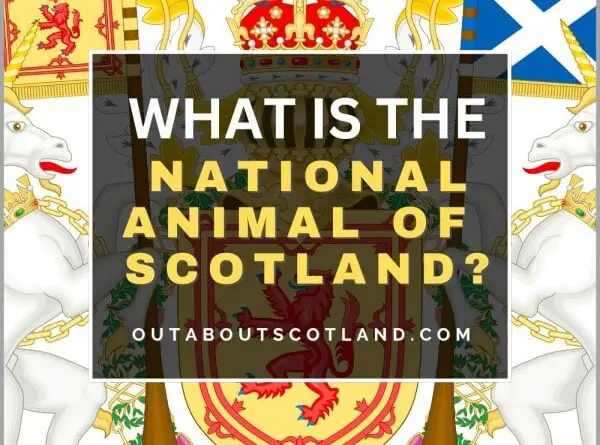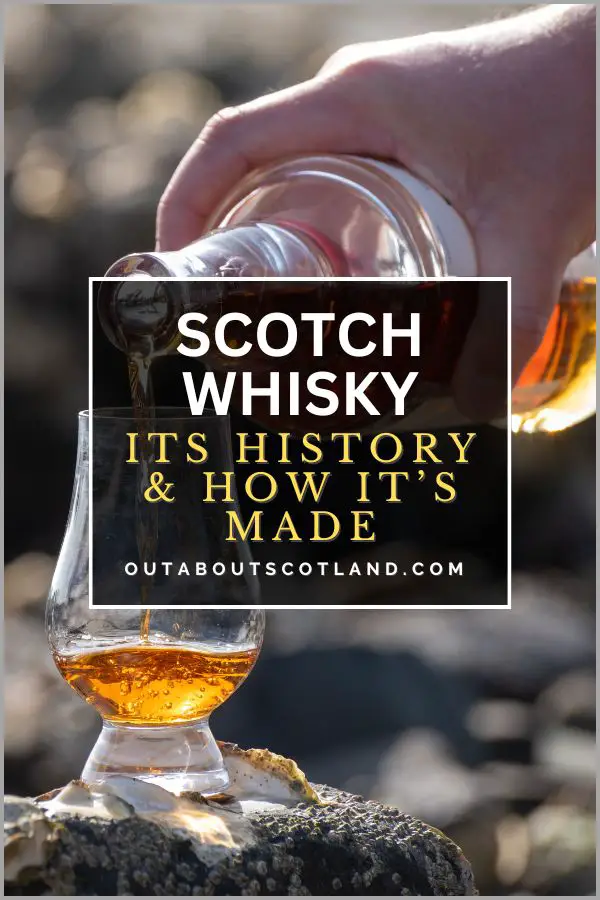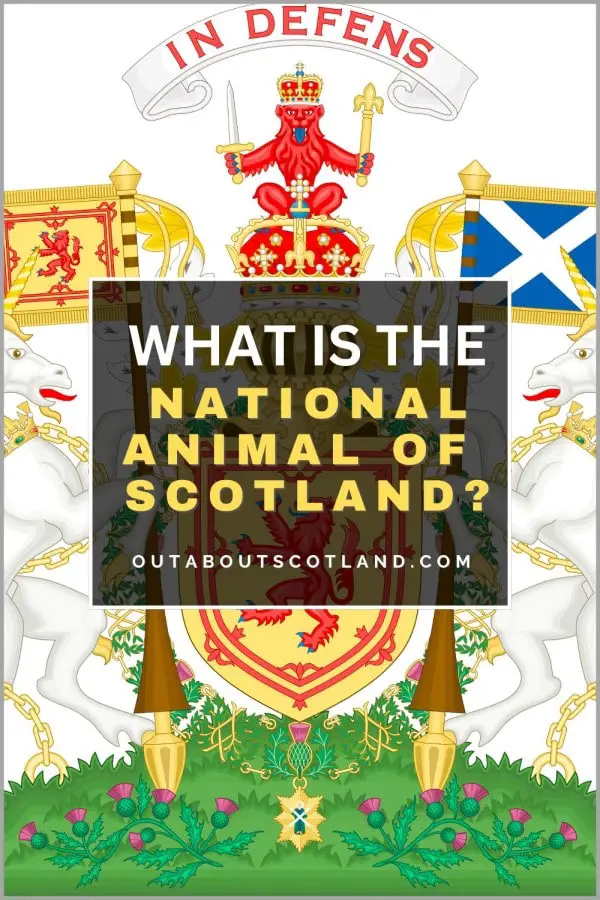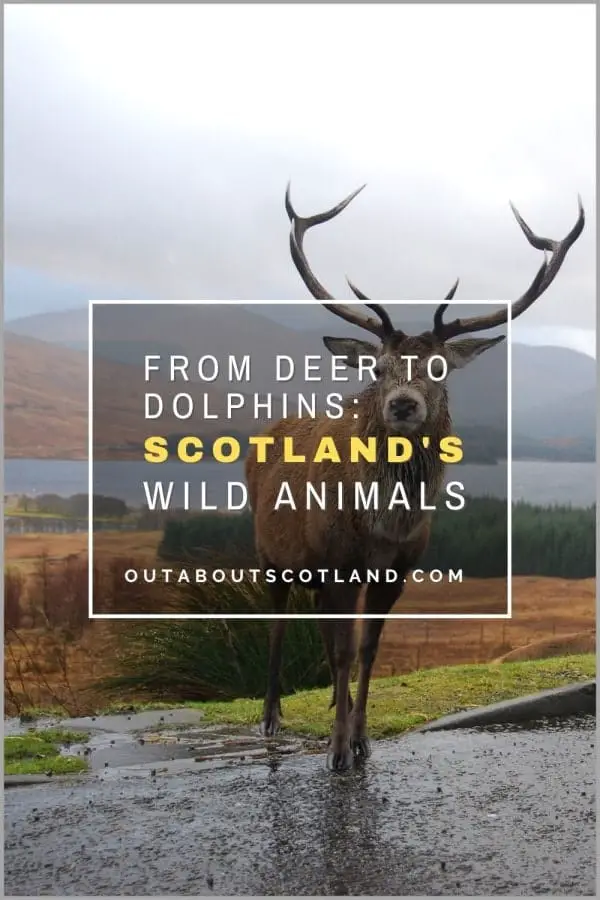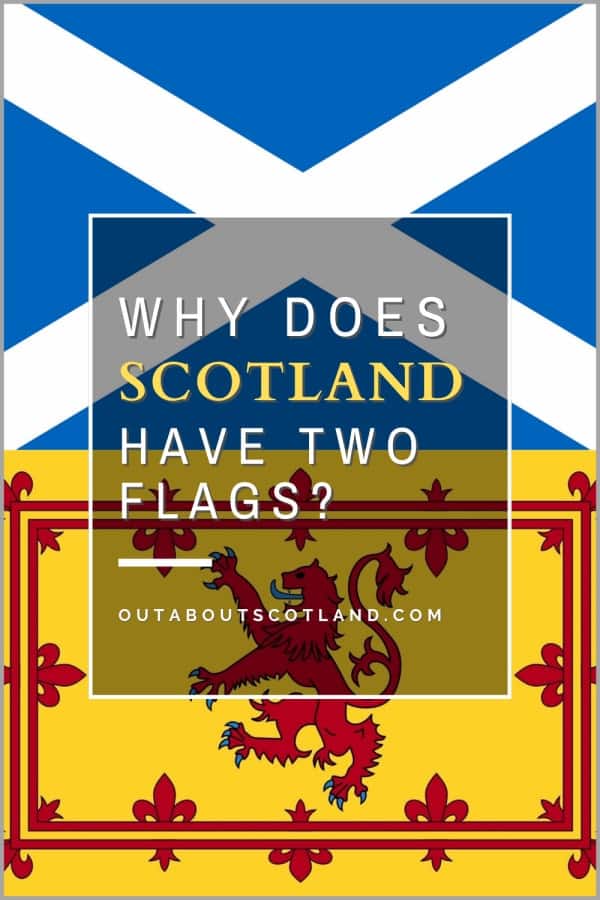Scotland has a long and interesting history, and the unicorn, the country’s national animal, is one of its most cherished symbols. But why did the Scots choose a mythical creature as their national animal, and what is the unicorn’s role in Scottish folklore and mythology?
In this article, we’ll take a look at the history of the unicorn in Scotland and how it fits into the culture and identity of the country both in the past and the present day.
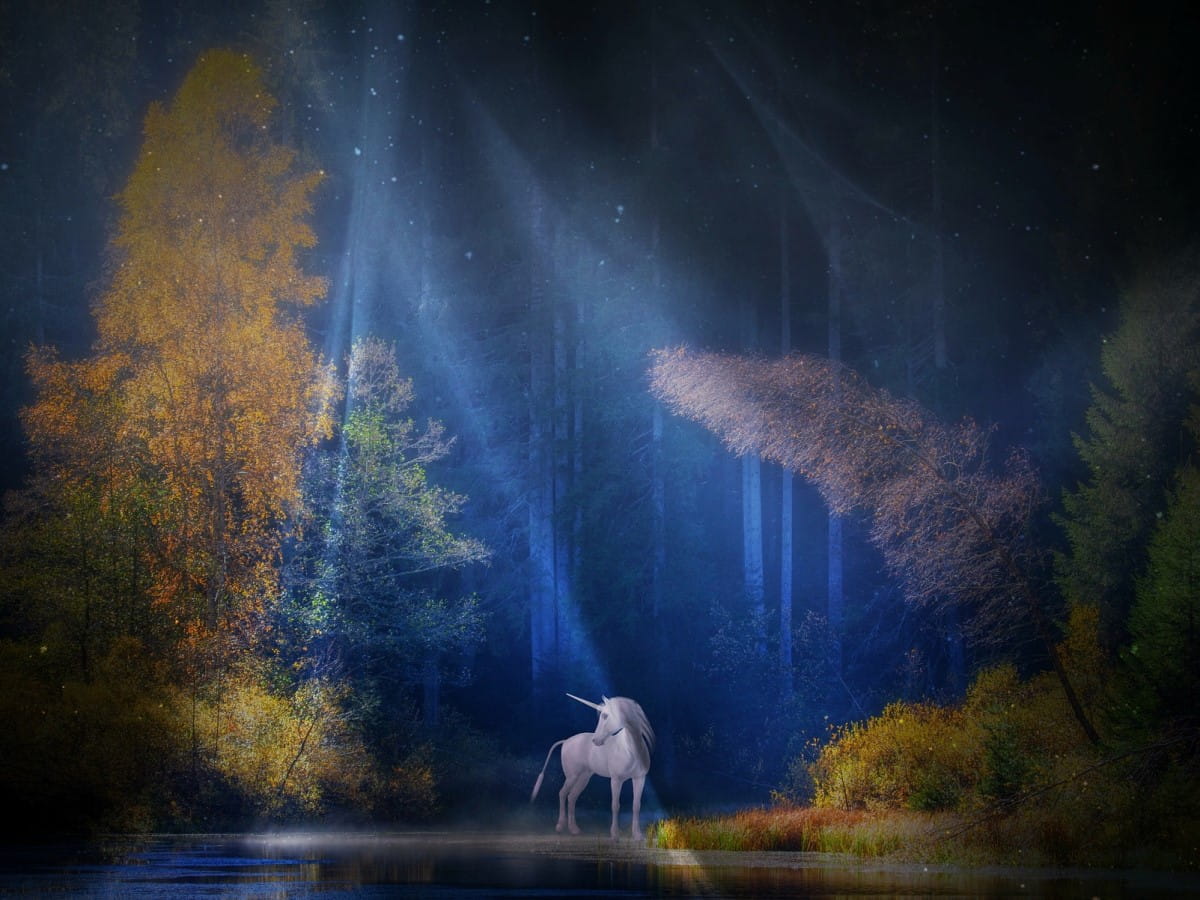
The Origins of the Unicorn
The unicorn is a mythical creature that has been a part of human folklore for centuries. It is often depicted as a horse-like creature with a single, spiralling horn projecting from its forehead, though unlike modern depictions, the traditional unicorn has the body of a stag, the tail of a lion, and the head of a goat with a single horn in the middle.
In ancient Greece, the unicorn was known as the ‘Monoceros’, which means ‘one-horned’. It was believed to be a fierce and powerful creature that was almost impossible to capture.
According to legend, the only way to catch a unicorn was to use a young virgin as bait. When the creature approached her, it couldn’t resist laying its head in her lap, so if she was quick enough,, she could cut off its horn (a source of immense power) before it could escape.
In Chinese mythology, unicorns are a symbol of wisdom, longevity, and good fortune, while in medieval Europe, they represented the purity and virginity of the Virgin Mary and were often depicted in religious art alongside her. In these Christian images, the unicorn was shown as a gentle and docile creature that was very different to the wild beasts displayed in other cultures.
Why Is the National Animal of Scotland a Unicorn?
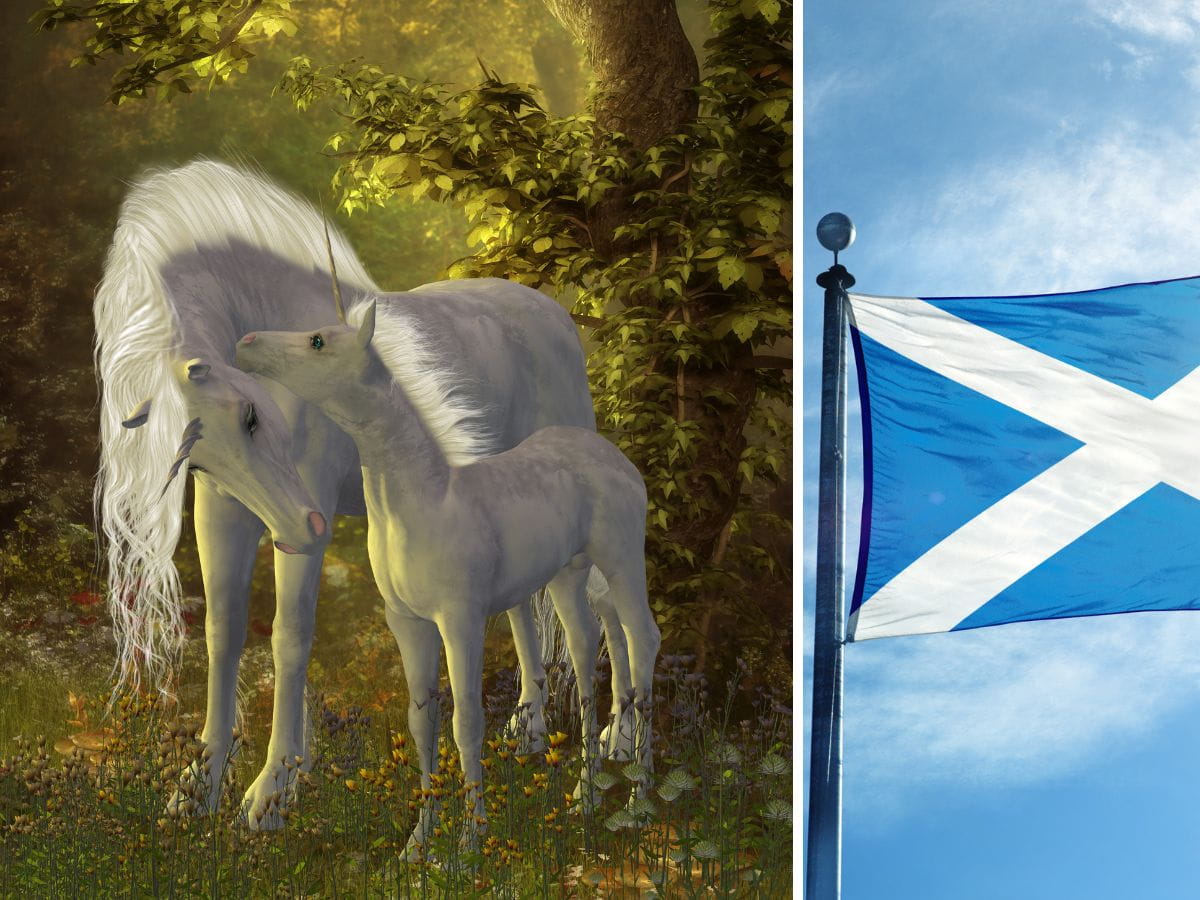
The unicorn made its way into Scottish folklore around the 12th century, when it was included in the heraldry of the Scottish royal family. Heraldry is the practice of creating and displaying coats of arms—a design printed on flags, clothing, and even armor—that serves as a visual representation of an individual, a family, or a country’s history, achievements, and values.
The earliest known depiction of a unicorn in Scotland dates back to the reign of King William I (1165-1214 AD) who used the unicorn as a symbol of his power. King William was keen to show the English just how strong and resilient his country was, especially in the face of England’s continual attempts to invade Scotland, and what better emblem was there to show how untameable Scotland was than the Unicorn?
Over time, the unicorn became an even more significant symbol for Scotland as it linked the country to the French court. In France, the unicorn was a symbol of royalty and aristocracy and was often used in art and tapestries. So, by adopting the unicorn as its national symbol, Scotland could reap the benefits of having ties with the powerful nation of France – a country that was also at war with England.
The Scottish people quickly took the mythical creature to heart and it soon became a symbol of the nation’s fierce independence and defiance.
The Royal Coat of Arms of Scotland
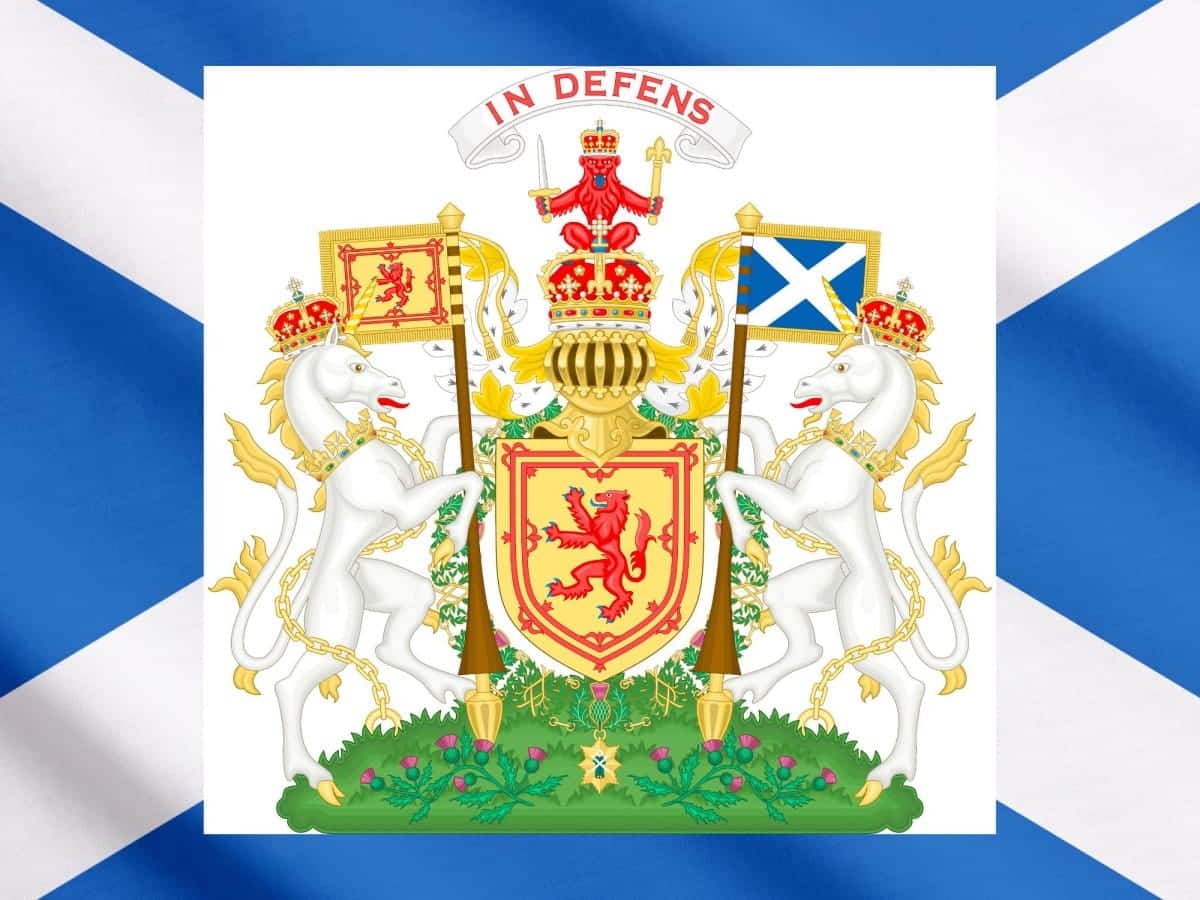
The Royal Arms of Scotland, also known as the Royal Coat of Arms of Scotland or the Arms of the King of Scots, is the official coat of arms used by Scottish monarchs.
The “double tressure flory-counterflory” is an eight-pointed star border that surrounds a red lion rampant with blue claws and tongue on a yellow shield. The crest consists of a lion wearing the Scottish Crown sitting on top of a helmet adorned with mantlingss and tassels. Two unicorns, which stand for strength and purity, are supporting the shield.
The motto ‘In Defens’ (an abbreviation of the motto ‘In My Defens God Me Defend’) is displayed above the shield, though some depictions also show the motto ‘Nemo me impune lacessit’ (No one provokes me with impunity) which refers to the ancient Order of the Thistle.
The Scottish Unicorn and the Lion Rampant
From the 15th century, the unicorn was often depicted with a crown around its neck and a chain tethering it to the ground, symbolizing the belief that only a true and rightful king could tame the wild unicorn, reinforcing the idea that the Scottish monarch held divine and legitimate power.
The lion, meanwhile, has been associated with Scottish royalty since the 13th century, when the Scottish king, Alexander II, introduced the double tressure flory-counterflory, a decorative border of stylized fleur-de-lis around it, and this design is still used today.
In later coats of arms, the Scottish unicorn was shown standing alongside the Lion Rampant as a symbol of the monarchy of the United Kingdom (the ruler of England, Scotland, Wales, and Ireland).
The lion and the unicorn are depicted as supporters, meaning they stand on either side of the shield to hold it up. The lion, representing the Scottish monarchy, stands on the left, while the unicorn, representing the untamed power of the Scottish nation, stands on the right. Together, these two powerful and noble creatures symbolize the unity and strength of the Scottish people and the monarch who rules them.
Unicorn Legends
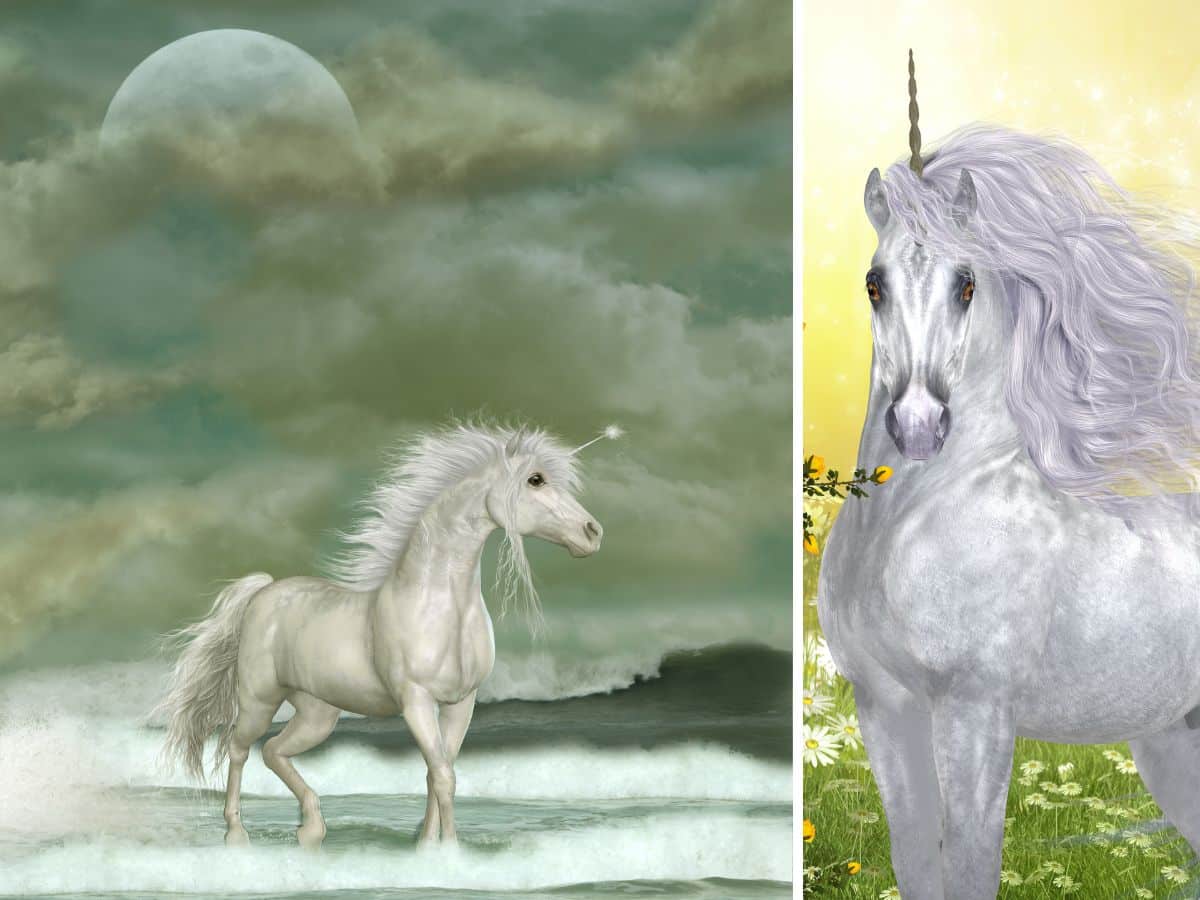
One of the most popular legends surrounding the unicorn is that its horn possesses powerful healing properties. This belief dates back to the Middle Ages when it was thought that a unicorn’s horn could purify water and cure various ailments, probably originating from the Scottish unicorn’s status as a symbol of purity.
However, unicorns were part of the myth and legend of many nations for centuries before Scotland embraced them, and there are dozens of stories and folklore associated with unicorns worldwide.
Here are some of the best-known legends:
1: The Garden of Eden. It’s said that the unicorn was one of the first creatures created by God to live in the Garden of Eden. According to the Bible, the unicorn was the first animal to be given a name which is why God gave its horn a special blessing. When Adam and Eve were expelled, the unicorn chose to leave the garden with them and so roams the earth to this day.
2: Ancient Greece. In Greek mythology, the unicorn was believed to be untameable except when approached by a virgin when it would rest its head in her lap.
3: The Hunt of the Unicorn. This is a series of famous medieval tapestries depicting the pursuit, capture, and eventual killing of a unicorn. The narrative highlights the unicorn’s symbolic associations with purity and healing.
4: Chinese Mythology. In Chinese culture, the unicorn is known as the qilin, a creature that represents wisdom, benevolence, and good fortune. It’s believed to appear only during the reign of a wise and just ruler or a great sage, an example being the birth of Confucius which was supposedly foretold by the arrival of a qilin.
5: The Water of Life. In many legends, the unicorn’s horn is said to possess magical properties. It is believed that the horn could purify water and neutralize poison.
6: Biblical References. Unicorns are mentioned in the Old Testament of the Bible several times, often symbolizing strength and power. Some scholars believe these references may be a mistranslation of the Hebrew word ‘re’em,’ which is mentioned nine times in the Hebrew Bible but actually refers to a wild ox.
The Modern Unicorn in Scotland
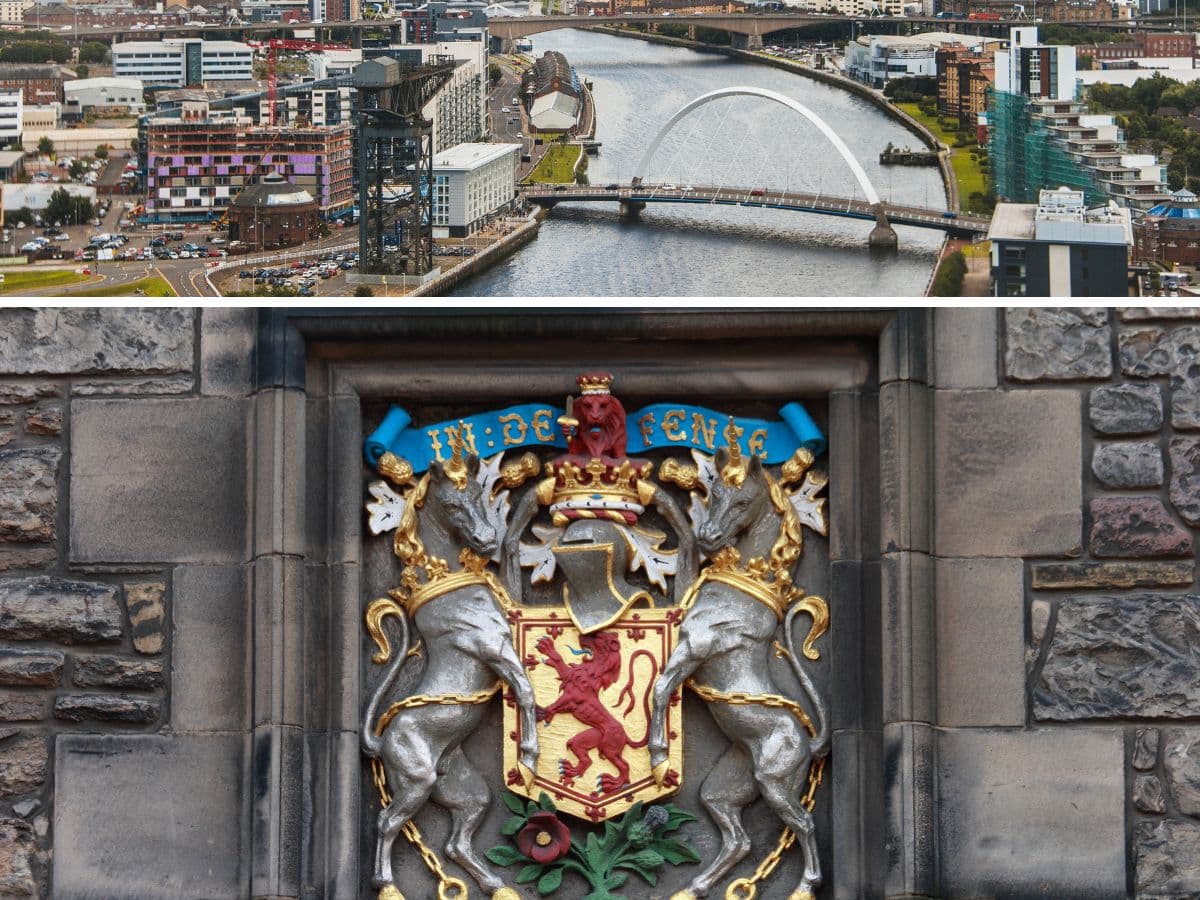
Today, you’ll find the unicorn everywhere in Scotland from tourist spots to craft breweries, and it can be found on everything from t-shirts to souvenirs. The unicorn is also featured prominently in places like the Scottish Executive’s logo, the Royal Coat of Arms, and on Scottish passports.
The unicorn appears in public art installations, on national monuments, and on heraldic designs throughout the country. It reflects the resilience of the Scottish people, their creativity, and their ability to adapt and thrive in challenging circumstances. This legendary creature is truly an important part of Scottish culture and continues to remind people of their country’s rich history and traditions.
Frequently Asked Questions
How does the unicorn appear in Scottish heraldry?
The unicorn is prominently featured in the Royal Coat of Arms of Scotland and the United Kingdom, serving as a symbol of Scotland’s strength, purity, and fearlessness. It is often depicted alongside the Lion Rampant, a symbol of Britain’s royal family.
Why is the unicorn the national animal of Scotland?
The unicorn was introduced to the heraldry of Scottish royalty in the 12 century. Unicorns have great cultural and historical importance in Scotland as they represent virtue, strength, and power, and as such are considered the country’s official national animal.
Does the Scottish unicorn have a name?
As a symbol, the Scottish unicorn is unnamed. Since it is a mythical creature, it does not have a specific name as a person would. Some fictional or creative representations of unicorns may give them identifiable names, however.
Is Scotland the only country with a fictional national animal?
No, Scotland is not the only country with a fictional or mythical national animal. Some other countries also have mythical creatures as their national animals including:
1: Wales has the red dragon (Y Ddraig Goch) as its national symbol.
2: North Korea has the Chollima, a mythical winged horse, as one of its national symbols, though officially it does not recognize any national animal.
3: The Czech Republic has a lion as its national animal, though it is depicted as having two tails so it can be considered to be a fictional creature.
What are some popular myths and legends about the unicorn in Scotland?
Some popular myths and legends about the unicorn in Scotland include its association with healing powers, its role as a harbinger of victory on the battlefield, and its status as an untameable creature.

